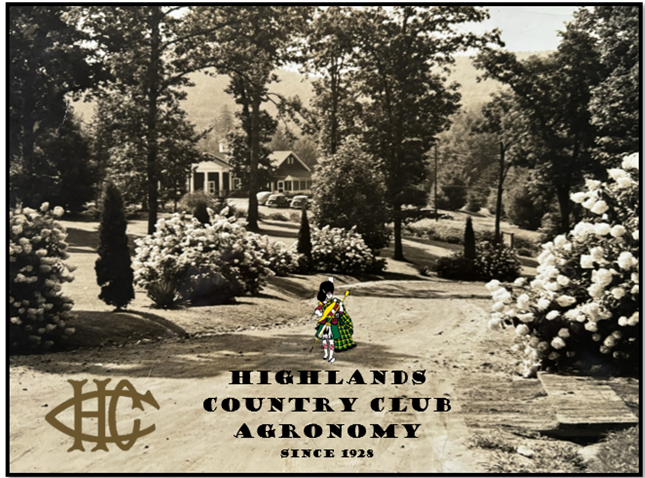Here is another topic you might have some interest in... How exactly do we determine where the pin goes every day? We change hole locations 7-days a week and I can assure you, there's been a lot of study and thought that's gone into developing our internal pin sheet, used by the golf maintenance team. I originally developed this rotation in 2014 and to this day, we are still tweaking it little by little.
To begin, what does the USGA say about pin locations? Answer: NOTHING. That's right, in the Rules of Golf, the USGA doesn't even touch on the subject. There is no guide that tells Superintendents where they can and can't put a pin. There are no "illegal hole locations." If the pin is placed 5" from the collar, the USGA says that is a legit hole location. Pretty shocking, isn't it?
Over time, Superintendents and course officials have developed their own set of unwritten rules for what constitutes a fair hole location vs. one that is deemed unfair. For example, it is widely accepted that we don't set pins closer than a flagstick length from the collar (8'). Especially as golf course maintenance evolved technologically and putting greens started to be mowed lower and lower, the idea of unfair pins became a reality. The slow greens of the 1980's and prior, allowed pins to be set virtually anywhere. A stimpmeter reading of 5' or 6' allowed golfers of any skill level the ability to stop a ball by the hole regardless if it was flat or on the side of a hill. Things changed once greens reached a speed of 10' or more (stimpmeter reading). Suddenly, slope began to play a big factor in where a pin should be set. This is something that's been studied by a number of organizations from the USGA to Augusta National GC and others. The general rule of thumb is that a 'fair pin' is one that is placed in an area that doesn't exceed 2% slope in an area measuring ten feet in each direction. If the putting green speed is a little slower, it is possible to get away with a pin on 2.5% slope. Anything more than 2.5% slope results in frustrated golfers who can't stop the ball anyway near the hole.
The 'smart tool' is a 4' long level that measures percent slope. An ideal pin location is an area about 10 feet wide in either direction that doesn't exceed 2% slope. If the greens are slower (10' stimpmeter reading), it is possible to get away with 2.5% slope. Anything higher than 2.5% slope on fast greens results in not being able to stop a golf ball near the hole.
At Highlands CC, I've identified the hole locations on every green using a 'Smart Tool,' pictured above. This tool lets me measure percent slope and it's shown on a digital display. To create a hole location rotation, I came up with my own set of standards. First, the most hole locations a green can have is nine. That means there are three across the front, middle and back. Since nine locations is the max, I created a rotation for nine days. However, we have some greens that have far less than 9 locations. Hole #12 for example, only has 4 total hole locations. Specifically, two in the front, none in the middle and one each in the back corners. Therefore, in my rotation of 9 days, each hole location on #12 would need to be used twice and one three times during that time period. Now that every green on the golf course has a set number of 'fair pin placements,' it was time to mix and match them so each day, the membership experienced a variety of hole locations. We don't want all 'Sunday hole locations' as some people say. I also didn't want you playing to 5 red flags in a row, for example. This was the fun part; tweaking the rotation to offer the most fun, yet challenging pin location schedule for our membership. Below, is a copy of the front nine rotation that my team member doing course setup each morning carries with them. We implemented this on a Monday, which become day 1. Tuesday became day 2 and so on until we reach day 9, the following Tuesday. Then on Wednesday, we started over at day 1. The course setup team member finds the dot for that day on the sheet below, which indicates where the pin will be that day. This concept prevents us from getting comfortable with only a few hole locations on each green, leading to their over use.
In the past, we talked about doing formal pin sheet like this each day but due to the smaller size of our greens, the familiarity the membership has with the greens and finally, the colored flag system, the Green and Golf Committees felt it wasn't necessary.
Golf Course Maintenance's internal pin sheet. (Front 9)
Next time you miss a par putt due to a suspect hole location and you're ready to blame Brian, thinking he got up on the wrong side of the bed, think back to to this blog post. A lot of effort has been spent developing a schedule of hole locations to make your rounds of golf at the Club most interesting they can be on the putting greens.
Is there something else on the golf course or a practice we do that you'd like to learn more about? Shoot me an email and let me know (bstiehler@highlandscountryclub.com). I'll be happy to explore anything you like!



